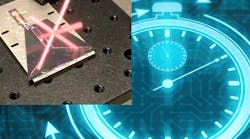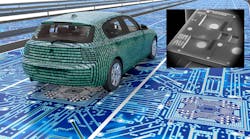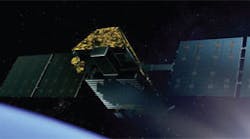
Draper
Cambridge, MA 02139
More Info on Draper

As a nonprofit engineering innovation company, Draper serves our nation’s interests and security needs; advances technologies at the intersection of government, academia, and industry; cultivates the next generation of innovators; and solves the most complex challenges. Multidisciplinary teams drawn from a broad and deep talent pool of 1,200 engineers and scientists collaborate to develop first-of-a-kind solutions. Our unbiased approach enables us to focus on our customers’ needs and to deliver new capabilities to them.
Autonomous Systems: Draper combines mission planning, PN&T, situational awareness, and novel GN&C designs to develop and deploy autonomous platforms for ground, air, sea and undersea needs. These systems range in complexity from human-in-the-loop to systems that operate without any human intervention. The design of these systems generally involves decomposing the mission needs into sets of scenarios that result in trade studies that lead to an optimized solution with key performance requirements. Draper continues to advance the field of autonomy through research in the areas of mission planning, sensing and perception, mobility, learning, real-time performance evaluation and human trust in autonomous systems.
Biomedical Solutions: Draper’s Biomedical Solutions capability centers on the application of microsystems, miniaturized electronics, computational modeling, algorithm development and image and data analytics applied to a range of challenges in healthcare and related fields. Draper fills that critical engineering niche that is required to take research or critical requirements and prototype or manufacture realizable solutions. Some specific examples are MEMS, microfluidics and nanostructuring applied to the development of wearable and implantable medical devices, organ-assist devices and drug-delivery systems. Novel neural interfaces for prosthetics and for treatment of neurological conditions are being realized through a combination of integrated miniaturized electronics and microfabrication technologies.
Fault-tolerant Systems: Draper has developed mission-critical fault-tolerant systems for more than four decades. These systems are deployed in space, air, and undersea platforms that require extremely high reliability to accomplish challenging missions. These solutions incorporate robust hardware and software partitioning to achieve fault detection, identification and reconfiguration. Physical redundancy or multiple, identical designs protect against random hardware failures and employ rigor in evaluating differences in computed results to achieve exact consensus, even in the presence of faults. The latest designs leverage cost-effective, multicore commercial processors to implement software-based redundancy management systems in compact single-board layouts that perform the key timing, communication, synchronization and voting algorithm functions needed to maintain seamless operation after one, two or three arbitrary faults of individual components.
Human-centered Solutions: Draper has continued to advance the understanding and application of human-centered engineering to optimize the interaction and capabilities of the human’s ability to better understand, assimilate and convey information for critical decisions and tasks. Through its Human-centered Solutions capability, Draper enables accomplishment of users’ most critical missions by seamlessly integrating technology into a user’s workflow. This work leverages human-computer interaction through emerging findings in applied psychophysiology and cognitive neuroscience. Draper has deep skills in the design, development, and deployment of systems to support cognition – for users seated at desks, on the move with mobile devices or maneuvering in the cockpit of vehicles – and collaboration across human-human and human-autonomous teams.
Image & Data Analytics: Draper combines specific domain expertise and knowledge of how to apply the latest analytics techniques to extract meaningful information from raw data to better understand complex, dynamic processes. Our system design approach encompasses effective organization and processing of large data sets, automated analysis using algorithms and exploitation of results. To facilitate user interaction with these processed data sets, Draper applies advanced techniques to automate understanding and correlation of patterns in the data. Draper’s expertise encompasses machine learning (including deep learning), information fusion from diverse and heterogeneous data sources, optimized coupling of data acquisition and analysis and novel methods for analysis of imagery and video data.
Materials Engineering & Microfabrication: Draper continues to develop its expertise in designing, characterizing and processing materials at the macro-, micro- and nanoscales. Understanding the physical properties and behaviors of materials at these various scales is vital to exploit them successfully in designing components or systems. This enables the development and integration of biomaterials, 3D printing and additive manufacturing, wafer fabrication, chemical and electrochemical materials and structural materials for application to system-level solutions required of government and commercial sponsors.
Microsystems: Draper has designed and developed microelectronic components and systems going back to the mid-1980s. Our integrated, ultra-high density (iUHD) modules of heterogeneous components feature system functionality in the smallest form factor possible through integration of commercial-off-the-shelf (COTS) technology with Draper-developed custom packaging and interconnect technology. Draper continues to pioneer custom Microelectromechanical Systems (MEMS), Application-Specific Integrated Circuits (ASICs) and custom radio frequency components for both commercial (microfluidic platforms organ assist, drug development, etc.) and government (miniaturized data collection, new sensors, Micro-sats, etc.) applications. Draper features a complete in-house iUHD and MEMS fabrication capability and has existing relationships with many other MEMS and microelectronics fabrication facilities.
Positioning, Navigation & Timing: Draper develops novel PNT solutions by combining precision instrumentation, advanced hardware technology, comprehensive algorithm and software development skills, and unique infrastructure and test resources to deploy system solutions. The scope of these efforts generally focuses on guidance, navigation, and control GN&C-related needs, ranging from highly accurate, inertial solutions for (ICBMs) and inertial/stellar solutions for SLBMs, to integrated Inertial Navigation System(INS)/GPS solutions for gun-fired munitions, to multisensor configurations for soldier navigation in GPS-challenged environments. Emerging technologies under development that leverage and advance commercial technology offerings include celestial navigation (compact star cameras), inertial navigation (MEMS, cold atom sensors), precision time transfer (precision optics, chip-scale atomic clocks) and vision-based navigation (cell phone cameras, combinatorial signal processing algorithms).




